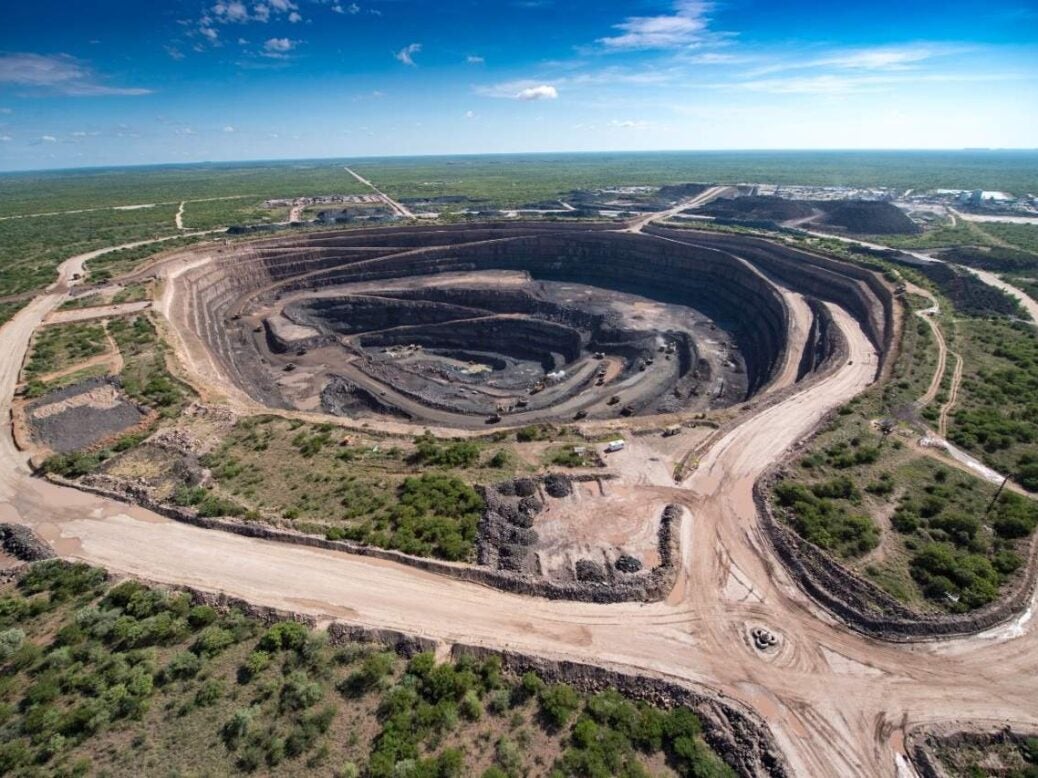
Diamond mining has revitalised Botswana – but elsewhere in Africa, some of the industry’s processes still lack clarity. By Edwin Smith
When Botswana gained independence from Britain in 1966, it was one of the poorest countries on the planet. Per capita income was around $80 a year – just 15 per cent of the global average, according to World Bank figures. But the following year, the southern African nation’s fortunes began to transform.
A vast diamond deposit was discovered in Orapa, a small town in the country’s Central District. After four years and $33 million of investment, mining could begin. It is now the largest diamond mine in the world. By 2018, Botswana’s GDP per capita had risen to $17,948. The country is now one of the wealthiest in sub-Saharan Africa and has been fêted by the African Development Bank as a paradigm of sustained economic growth.
Naseem Lahri, the woman in charge of another major diamond mine – the Karowe mine, 21km from Orapa – says the industry has benefited the people of Botswana and not just Western businessmen. ‘I’m a product of Botswana,’ Lahri tells Spear’s, referring to a system that provides free or heavily supplemented state education. ‘I went through the entire schooling process, which was funded by diamonds.’ In 2015 the Karowe mine produced the third largest gem quality diamond ever discovered, the 1,109-carat Lesedi La Rona, which was acquired by the jeweller Graff for $53 million.
The entire Botswana diamond industry is worth $3.3 billion a year, accounting for around a fifth of the country’s GDP and more than half of its exports. Botswana is often held up as an example of how diamond mining can benefit local populations. The company that first mined in Orapa was a joint venture between the government and DeBeers, and it is today the largest producer of diamonds in the world (in terms of value).
In addition, Botswana owns a 15 per cent stake in DeBeers and the mining giant has been credited with building roads, hospitals and schools and helping to address health issues such as HIV in the country. However, In the run-up to October’s general election, opposition leader Duma Boko called for ‘much fairer and more equitable’ treatment when the current deal with DeBeers – which runs until 2021 – is renegotiated.
Elsewhere in Africa, the way the proceeds of the industry are used remains the subject of controversy. The role diamonds played in funding conflicts in several West African nations around the turn of the millennium was memorably depicted in the Hollywood film Blood Diamond.
In real life, in 2003 the Kimberley Process Certification Scheme was established to prevent proceeds from diamonds being used to fund violence. Today, however, various groups argue that the scope of the process is too narrow, and that any sanctions are too easy to circumvent.
A UN panel of experts estimated that $24 million of diamonds were smuggled out of the Central African Republic even after diamond exports from the country had been banned. There is also evidence to suggest that Zimbabwe’s state security forces have been perpetrating human rights abuses with help from funding that flows from diamond mining, according to Global Witness, a human rights organisation. But because the Kimberley Process applies only to ‘rebel movements’ that are ‘seeking to undermine legitimate governments’, it doesn’t have any bearing on such cases.
Amid criticism of the Kimberley Process, several organisations are addressing’ concerns, including new technology to track stones and their country of origin. However, merely knowing where a diamond has come from may not be enough, says Alice Harle of Global Witness: ‘That’s not the same as understanding the risks that it may have been associated with at mining or during the transport period.’ It remains ‘difficult’ for consumers to know how the diamonds in jewellery shops in London or New York have ended up there, adds Harle.
‘The key thing that consumers can do is ask questions when they’re buying a diamond – about the retailer they’re buying from, their sourcing policy, and how they can provide assurances that the stone hasn’t been associated with human rights abuses or environmental damage along the supply chain.’ Harle welcomes efforts to improve transparency in those supply chains as ‘progressive news’, but adds: ‘There’s a lot of progress still to be made.’
Read more from the Spear’s Africa issue:
It’s time to invest in an African future – inside the latest issue of Spear’s
Why the future of the global economy is African
‘Over the next 50 years this is where you should be putting your money’








